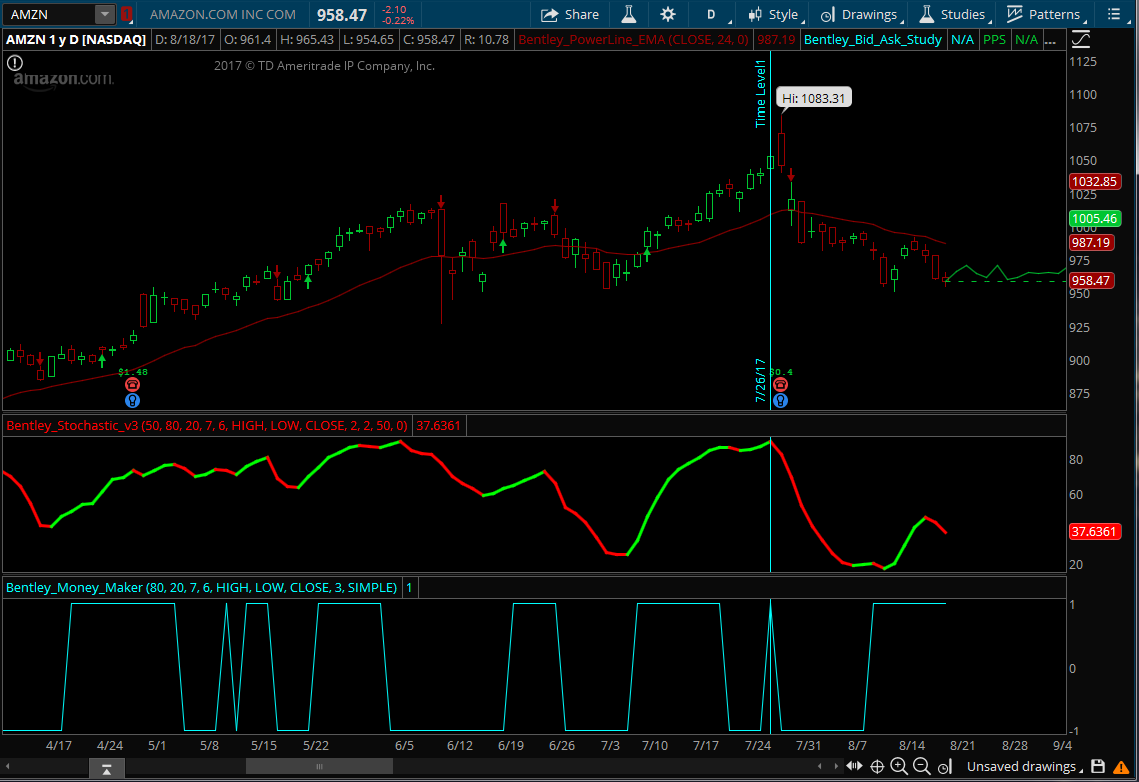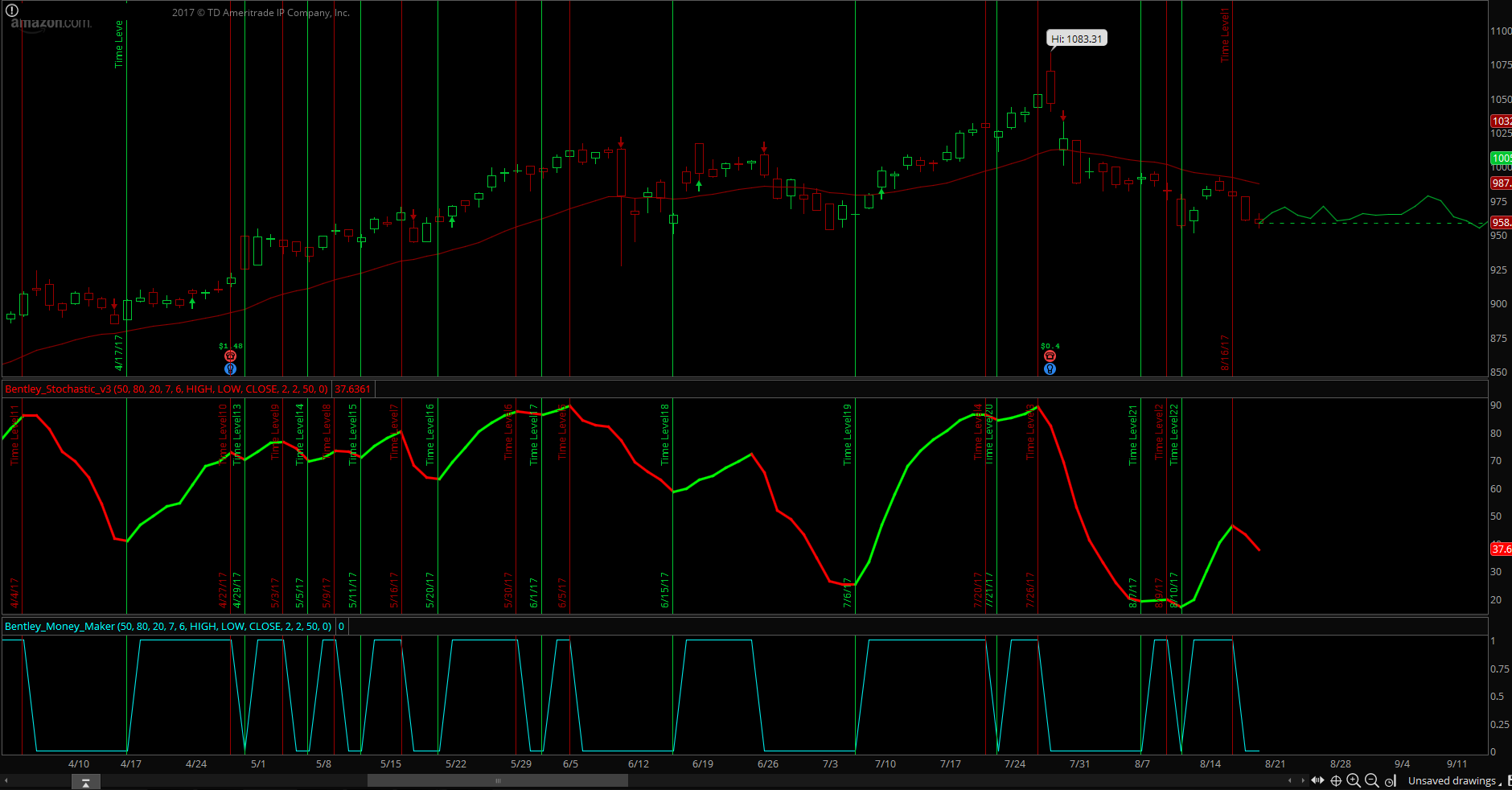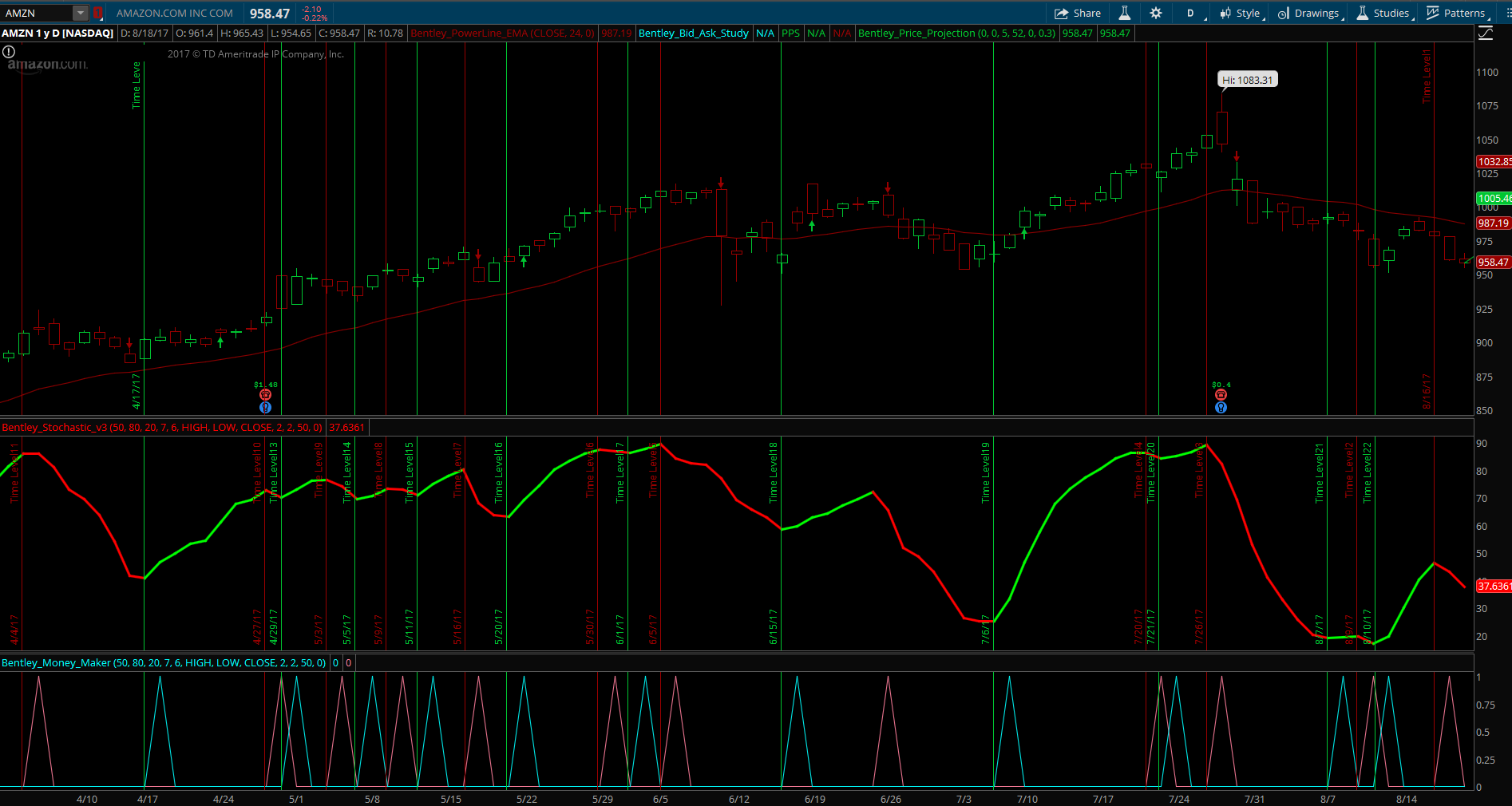| ♥ 0 |
Hello all, I’m having trouble modifying a StochastichFull indicator that was customize for the FullD to change color when certain conditions are met. I tried to modify the code to add an alert and to use it with a scan, when the colors change from red to green. Please see my code changes below along with original color plot of the FullD. My Changes declare lower; input over_bought = 80; def lowest_k = Lowest(priceL, KPeriod); def FullK = MovingAverage(averageType, FastK, slowing_period); plot Data = (if FullD > FullD[1] then 1 else (if FullD == FullD[1] then 1 else -1));
Original Color changes plot statement FullD.AssignValueColor(if FullD > FullD[1] then Color.green else (if FullD == FullD[1] then Color.green else Color.red));
Marked as spam
|
Please log in to post questions.





Well the logic in the plot Data statement appears to be an exact match. So what is your concern? Are you wondering why the signals do not match the color changes? Check your settings. The two studies in your screenshot are not using exactly the same settings. Try that and get back to us if this doesn’t clear things up.